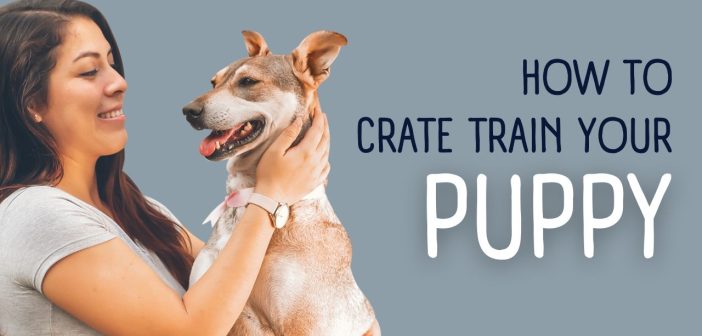Crate training is one of the most effective ways to create a safe, comfortable environment for your dog while teaching them boundaries and good habits. When done correctly, crate training taps into your dog’s natural instincts to seek a den—a secure, cozy spot that feels like home.
This guide will walk you through the process with actionable steps and practical advice to ensure success for you and your furry companion.
Why Crate Training is Important
Dogs are instinctive den animals, seeking out small, enclosed spaces for comfort and security. A crate, when introduced properly, can become your dog’s go-to retreat. Beyond providing a safe haven, crate training is a powerful tool for:
- House Training: Dogs naturally avoid soiling their sleeping area, which helps establish a routine.
- Safety: Crates prevent your dog from getting into trouble when you can’t supervise them (like chewing on wires or furniture).
- Travel: A crate-trained dog is more comfortable during car rides or stays in unfamiliar places.
Choosing the Right Crate
Picking the right crate sets the stage for success. Keep these factors in mind:
- Size: The crate should be big enough for your dog to stand up, turn around, and lie down comfortably. Too much extra space can lead to accidents.
- Type: Crates come in various styles, including wire, plastic, and fabric. Choose one that fits your dog’s needs and your lifestyle. For example, wire crates are great for home use, while plastic crates work well for travel.
- Comfort: Make the crate inviting by adding a soft bed or blanket. Include toys or items that smell like you to help your dog feel at ease.
Steps to Crate Train Your Dog
Step 1: Introduce the Crate
Start by making the crate a positive, pressure-free space. Place it in a common area where your family spends time, such as the living room. Leave the door open and let your dog explore at their own pace.
Tips:
- Toss treats or favorite toys inside to encourage curiosity.
- Praise your dog when they step into the crate voluntarily.
Step 2: Build Positive Associations
Feed your dog near the crate to create positive connections. Once they’re comfortable, move their meals inside the crate.
Tips:
- Gradually close the door while they’re eating, opening it as soon as they’re done.
- Increase the time the door remains closed each day.
Step 3: Practice Short Stays
After your dog is comfortable eating in the crate, practice having them stay inside for short periods. Start with just a few minutes, and gradually work up to longer stretches.
Tips:
- Stay in the room at first so your dog doesn’t feel abandoned.
- Use a cue word like “crate” or “bed” to signal it’s time to go in.
Step 4: Extend Time and Distance
Once your dog can stay in the crate calmly for 30 minutes while you’re nearby, start leaving the room. Build up to leaving the house for short periods.
Tips:
- Leave a safe chew toy or treat puzzle to keep them occupied.
- Always make crate time a calm experience—avoid fanfare when leaving or returning.
Do’s and Don’ts of Crate Training
Do
- Exercise Patience: Every dog learns at their own pace.
- Use Positive Reinforcement: Reward good behavior with treats, praise, or affection.
- Keep a Schedule: Dogs thrive on routine, so establish a consistent feeding, potty, and crate schedule.
Don’t
- Use the Crate as Punishment: This will make your dog fear the crate instead of viewing it as a safe space.
- Overuse the Crate: Dogs are social animals and need plenty of time outside the crate to interact with you and their environment.
- Respond to Whining: If your dog is whining for attention, wait for them to stop before letting them out.
Common Challenges and How to Handle Them
Whining or Crying in the Crate
It’s tough to ignore, but giving in reinforces the behavior. Instead, ensure your dog has gone to the bathroom, isn’t hungry or thirsty, and has had enough exercise. Then wait it out.
Separation Anxiety
If your dog struggles with being alone in the crate, try desensitization by leaving for very short periods and gradually increasing the time.
Accidents in the Crate
This is usually a sign the crate is too large, or you’re leaving your dog inside for too long. Adjust the size or take more frequent potty breaks.
When to Use the Crate
- At Night: Many dogs feel safe sleeping in their crate.
- During the Day: Use the crate when you’re busy or out of the house, but avoid excessive use.
- For Travel: A crate-trained dog travels more comfortably and safely.
Over time, the crate will become your dog’s sanctuary—a place they go willingly and happily. Eventually, many dogs won’t need the crate at all, but it’s always there as a familiar retreat.
Crate training isn’t just about convenience; it’s about creating a bond of trust and understanding with your dog. By following these steps and staying consistent, you’re setting your pup up for a lifetime of happiness and security. Remember, every dog is unique, so tailor the process to fit their personality and needs.
Happy crate training!





3 Comments
Hi Eric,
I love your post, I am a huge advocate of crate training and continues to tell all new clients that come through the clinic that every puppy should come with a crate!
Thanks for this – certainly some interesting tips to use, as my dog’s favourite spot is under our dinner table – it can be a nightmare when there are several off us sitting around it!
Pingback: How to Stop Destructive Chewing - unleashedtampabay.com